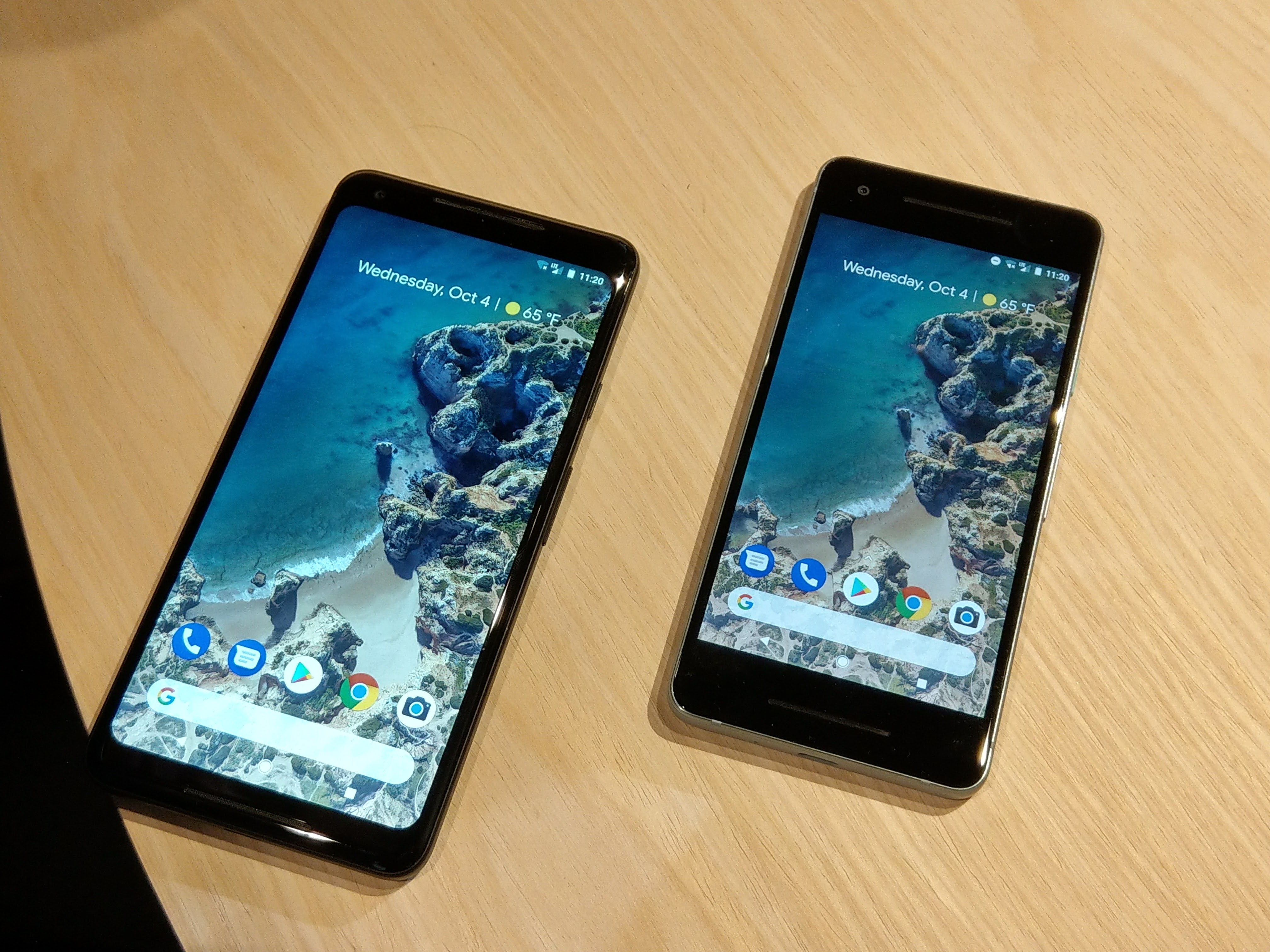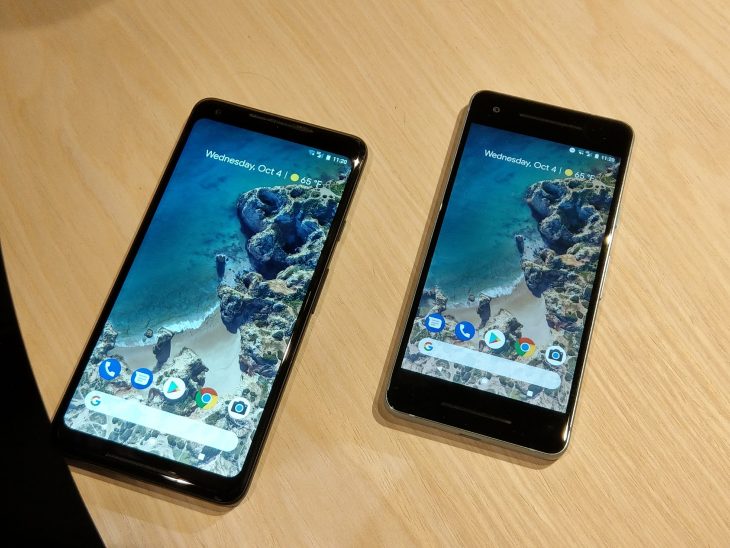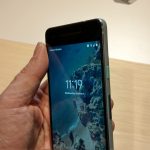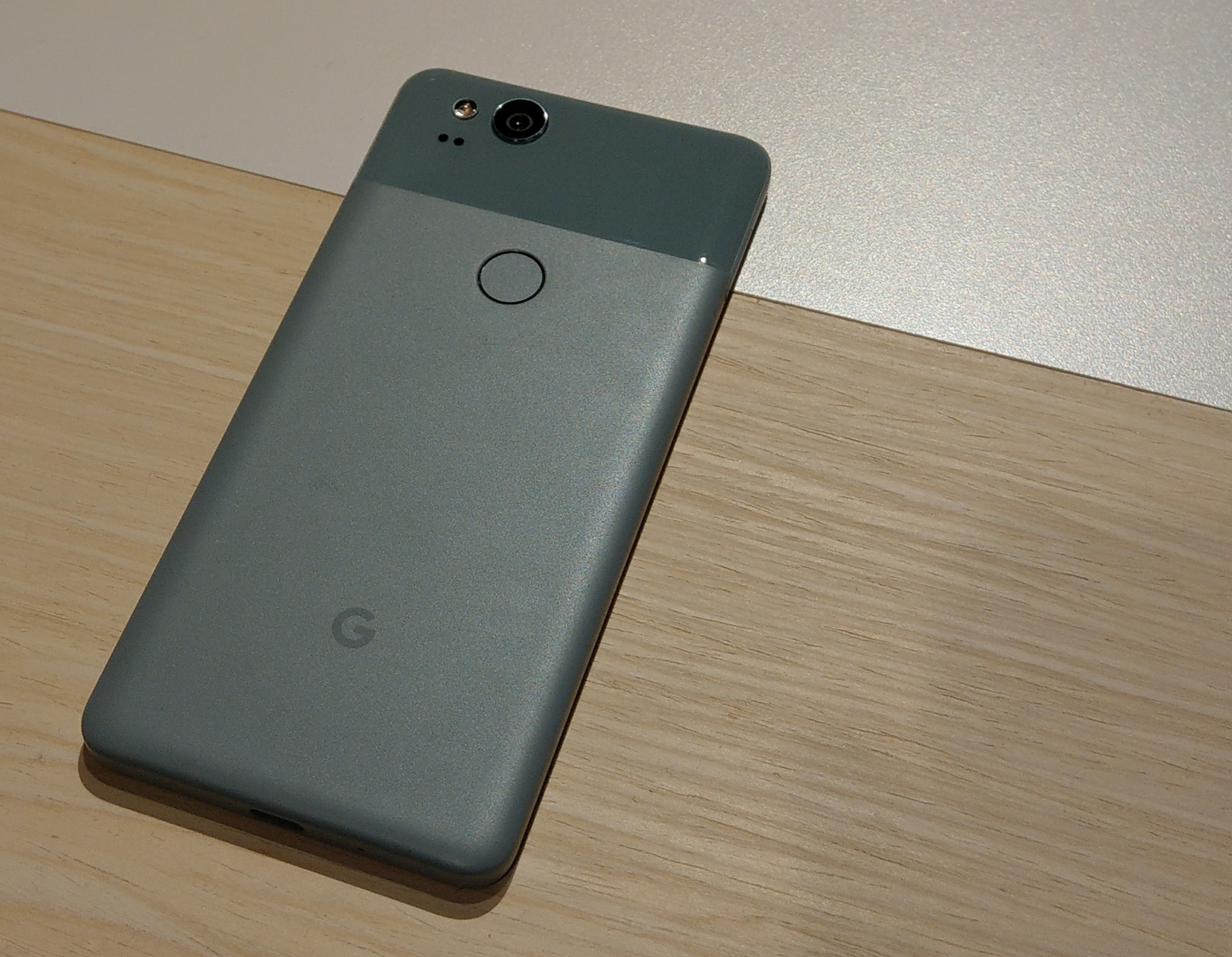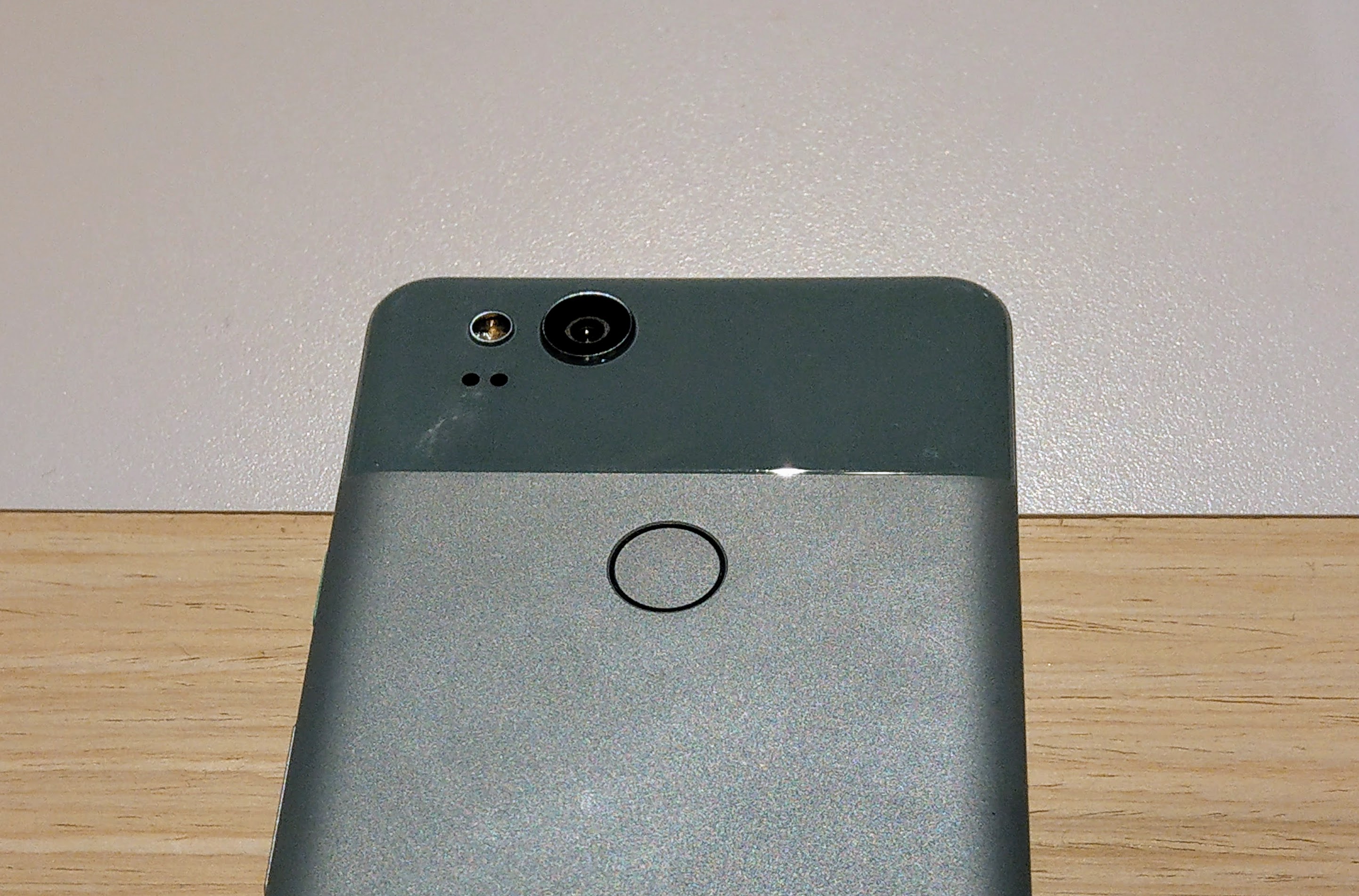Google’s newest phones, the Pixel 2 and Pixel 2 XL, are finally here after months of leaks and speculation. The official launch event just wound up at San Fransiscio’s SF Jazz building, and we’ve had a chance – briefly – to go hands-on with the new phones in a very crowded demo area.
This year’s Pixels are markedly different visually, but they share the same software smarts. The updated industrial design of the range accentuates the curves on both devices, moreso on the XL where the screen corners are rounded to match the device’s curvature.
Both phones feel a little lighter than you’d expect given their construction. It’s not out of line with 2017’s major phones, though. Despite the 6-inch screen size of the Pixel 2 XL, it shares the taller and thinner screen aspect ratio of the LG V30, and thus is pretty comfortable to hold in the hand despite the size.
The colour highlights on the power button – a playful addition according to Google – do take a little getting used to but it’s very likely you’ll get used to it quickly. The light teal colour is a little easier on the eye than the sharp red.
Google’s demo staff were quick to point out the differences between the LG V30 and the Pixel 2 XL – there’s a different finish on the device (arguably, Google’s flatter colours are a nicer look than LG’s own shiny finish) and they’ve adorned the face of the phone with the front-facing speakers that have become so well-regarded by fans.
Also new is the addition of Active Edge, Google’s version of the squeezeable smartphone edges. On this year’s Pixels, it launches the Google Assistant – but it’s not yet clear if this is configurable:
It’s been easy in the run-up to today’s announcement to dismiss the standard 5.2-inch Pixel 2 as the poor cousin to the 6.0-inch but with the smaller phone in hand that comparison seems a little unfair.
In the hand, the new Pixel 2 is quite comfortable and it feels consistent with what’s come before it – that familiarity is going to be important in winning over fans from the i-device side.
We need to talk about the cameras. They’re pretty impressive.
DxOMark has given the Pixel 2’s camera its highest ever rating for a mobile device. 2017 has seen a leapfrog game, with top laurels passed from Google to HTC, to Apple, to Samsung and finally back to Google again. It puts the Pixel 2 in a remarkably good position to appeal to smartphone photographers.
While the Pixel 2 XL is based on LG’s V30 hardware, the single rear camera is Google’s choice. It’s an f/1.8 aperture which isn’t the lowest on the market at present, but it’s paired up with Google’s machine learning smarts to enhance the photography experience.
Google Camera’s new Portrait mode is specifically tied to a “left” and “right” view in each pixel, which makes it possible to determine depth in a photo and lets the device do some clever post-processing to determine depth. It works remarkably well, although we did see curly hair confuse it a little in the demo area. You can also access the blurred and the standard version of your shot:
We also got a look at how Google Lens will work, although the video below does come with a warning – the demonstrator was pretty excited about the possibilities, and does keep moving the phone around a lot.
I was all set to let the Pixel 2 devices pass on by this year (I purchased a Pixel of my very own last year), but the camera may well see me coming back to the Pixel fold.
All we need now is an Australian release date. Okay Google Australia – when can I damage my wallet?

